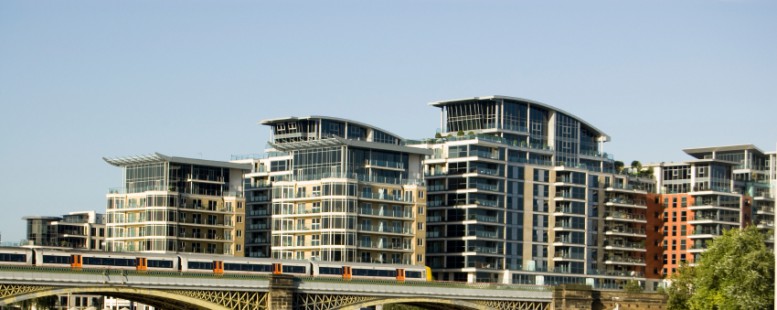Our Opinion: 2018
What’s ailing the UK property market?

House price growth across the country has slowed to just 2.2%, according to the most recent Nationwide release. That’s a drop in real (after-inflation) terms. Meanwhile, transaction levels are falling – mortgage approvals dropped to their lowest level in three years in December.
What is rattling Britain’s favourite asset class?
‘Brexit’ is the go-to excuse for those in the property business. The reality is that the problems in the UK housing market are a lot bigger than mere Brexit.
Last week, London estate agent, Foxtons, issued yet another set of grim results. The group halved its dividend as profits slid by nearly two-thirds to £6.5m last year. The big hit came from a near 25% drop in property sales activity (although lettings business revenue was down 3%, too).
London has been the hardest hit part of the UK housing market. At the high end, discounts on asking prices are at their highest levels since the financial crisis, according to LonRes. However, according to the most recent survey by the Royal Institution of Chartered Surveyors (RICS), activity is slowing across the country.
You can put it down to Brexit. You can put it down to political uncertainty. And both of those might be affecting the higher end of the market, in that the globally mobile super-rich are becoming less willing to buy luxury property in an era where populist governments might be tempted to tax non-portable assets.
But there’s a much more specific reason for house prices to be struggling, and it’s one that isn’t going to change any time soon. It’s the fact that one of the biggest and most powerful purchasing forces in the UK market of the past decade is being squeezed out of the market.
Between changes to buy-to-let taxation and higher levels of stamp duty, becoming a landlord is no longer seen as the route to riches it once was. And that is having a big impact on the UK property market.
The additional rate of stamp duty on those buying second homes is one factor putting off would-be landlords. But more important is that the ability for higher-rate taxpayers to offset their mortgage interest payments against their tax bills is being withdrawn in stages. The squeeze began last year, and it will be entirely withdrawn by April 2020.
The upshot is that it’ll be far harder for landlords to make the sums add up. It’s also become harder to secure a mortgage as a buy-to-let landlord, partly as a result of this and partly as a result of generally tighter mortgage lending rules. The figures make it clear that this is already having an effect.
Last year, according to estate agency Countrywide, landlords bought 12.5% of homes sold in the UK – a nine-year low – compared to 14.7% in 2016, and 16.3% in 2015. The biggest drop was in London. Meanwhile, the proportion of landlords buying in cash has been rising sharply.
The abolition of tax relief isn’t the only issue facing landlords. Buy-to-let mortgages are typically interest-only loans. That is great news when interest rates are this low – your monthly payments amount to buttons because you aren’t repaying any of the original capital.
However, it means you feel the pain of rising interest rates much more acutely than anyone with a repayment mortgage: because your entire payment is made up of interest, your bills will go up proportionately more when rates rise.
In short, if rates do rise – even a little – between now and 2020 (which seems very likely at the moment), then landlords are going to be squeezed even harder, between falling tax relief and rising rates.
While some landlords have already woken up to this, human nature means that many others will only realise just how much their property is costing them when they fill in their tax returns in years to come. For some, the resulting figures will come as a nasty shock.
The only realistic conclusion is that we’ll see a bigger exodus from the sector and more than likely, the end of the era of the “accidental-turned-permanent landlord”. And the point is, this is not going to change any time soon. Soft Brexit, hard Brexit or no Brexit, this is a structural change.
The good news is that this leaves the field open to potential owner-occupiers. The difficult bit is getting from where we are now to a point where those first-time buyers can actually afford to buy property. Landlords always had more buying power than first-time buyers. Not only were they generally already property owners and both older and more established, they also enjoyed big tax advantages.
With that gone, competition on the demand side of the property market has fallen. Meanwhile, on the supply side, at the margins, some landlords will be squeezed out of the market – some may even be forced sellers.
What will happen to prices? As long as interest rates stay relatively low (and they could go up a bit from here and probably still not do too much damage), then the idea of a huge crash still seems unlikely. But equally, there’s little reason to expect prices to rise. Whichever government runs the country for the next ten years or so, it’s clear that increasing housing supply is a major policy goal now. Interest rates can’t get any lower, so it’s hard to see how credit conditions can get any easier. And physical property is going to remain a tempting target for taxation.
In market terms, most of the risk is to the downside. We should all welcome lower house prices and a more sensible UK housing market. Let’s just hope the adjustment happens gently enough for the financial system to cope.
15th March 2018
